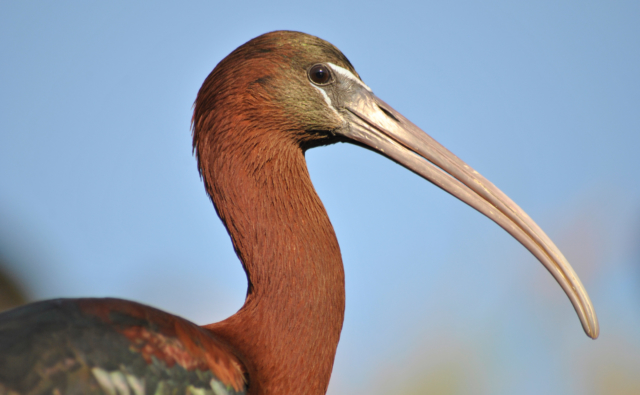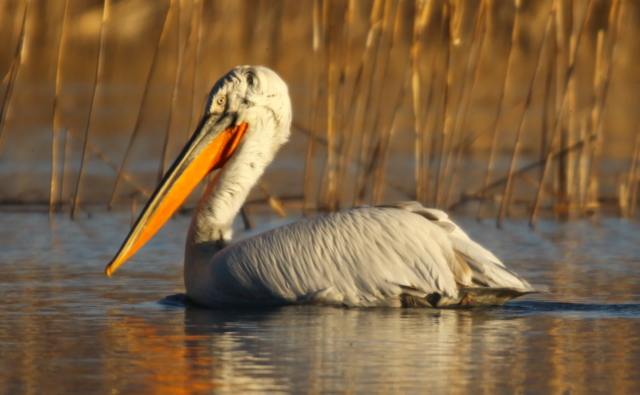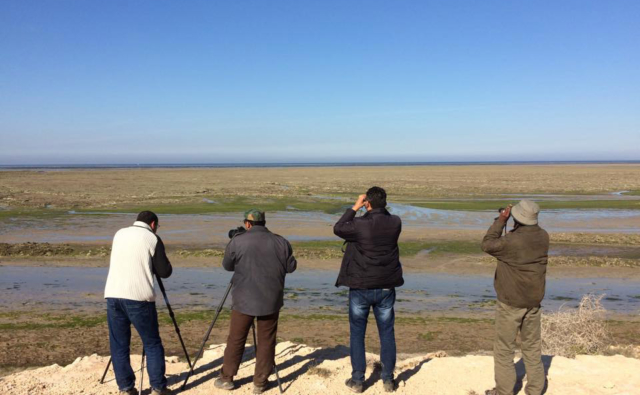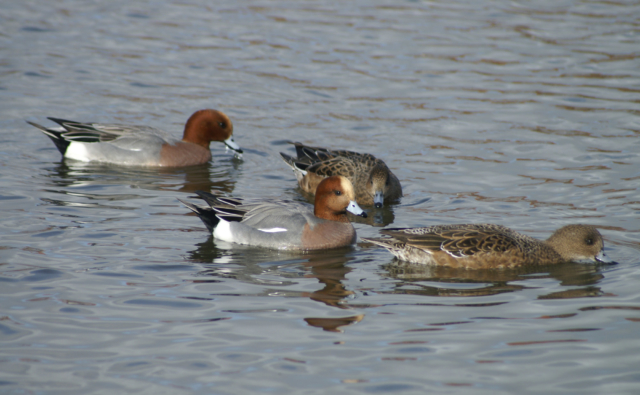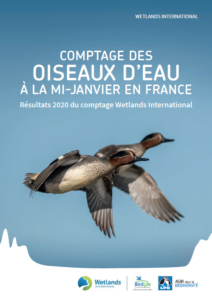 Coordinated in France by the French Bird Protection League (LPO) on behalf of Wetlands International at the international level, this census was first made in 1967 for ducks, geese, and swans (Anatidae) as well as coots, and then extended to include a larger number of species. It enables the status and trends of waterbird populations on the five continents to be assessed each year in a participative operation.
Coordinated in France by the French Bird Protection League (LPO) on behalf of Wetlands International at the international level, this census was first made in 1967 for ducks, geese, and swans (Anatidae) as well as coots, and then extended to include a larger number of species. It enables the status and trends of waterbird populations on the five continents to be assessed each year in a participative operation.
This census is always conducted around mid-January, the period during which the majority of waterbirds from the northern hemisphere are at their wintering sites, where their concentration facilitates the counting operation.
In France, by mid-January 2020, over 1,500 volunteer bird counters participated in the waterbird census in more than 500 wetlands throughout the country.
Some results
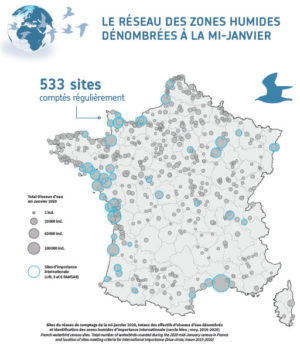 A total of 2.8 million waterbirds were counted in this latest edition, a number within the average of previous counts, indicating some stability in the overall numbers of waterbird populations.
A total of 2.8 million waterbirds were counted in this latest edition, a number within the average of previous counts, indicating some stability in the overall numbers of waterbird populations.
Due to another very mild autumn and winter, Anatidae, Coot and Grebe numbers were particularly low.
Numbers of Harvest Geese, Scaups, Common Goldeneye, in constant decline since the beginning of monitoring, are at their lowest levels in 2020.
In contrast, the numbers of shorebirds are high with historical records (Golden Plover, Black-tailed Godwit) as well as for wading birds (Ardeidae, Ibis, Spoonbill, Flamingo), probably for the latter in connection with good breeding periods and mild winter conditions. This means that protection measures are rather effective.
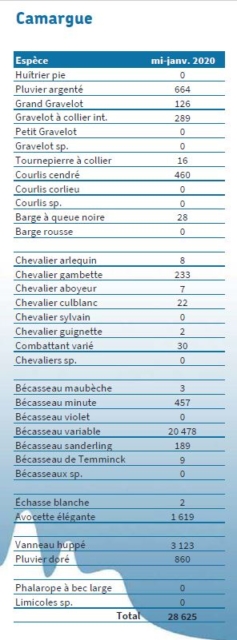
The Camargue is this year at the top of the classification of the 47 wetlands identified as being of international importance according to the Ramsar convention.
